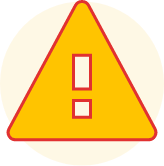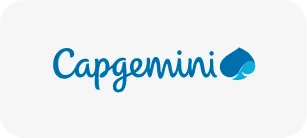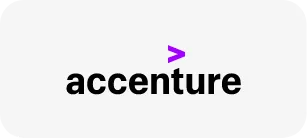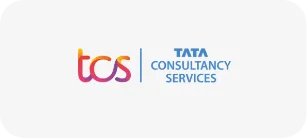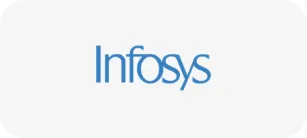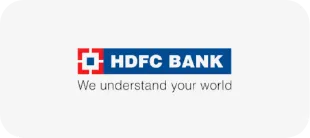Course Highlights
About the Program
Capgemini, a global leader in consulting, technology services, and digital transformation, is committed to enabling inclusive growth and sustainable development through its Corporate Social Responsibility (CSR) initiatives. Headquartered in Paris and operating in over 50 countries, Capgemini helps organizations embrace the power of technology to meet their business goals—with a strong focus on innovation, sustainability, and social impact.
As part of its CSR mandate, Capgemini, along with Amazon Web Services (AWS), is transforming lives through its flagship skilling initiatives focused on preparing underserved youth for in-demand roles across three critical domains that are Tech, Semi-Tech, and BFSI by empowering communities through digital inclusion, education, and employability-focused programs
In collaboration with Anirban Rural Welfare Society (ARWS) - a grassroots NGO dedicated to community development, Capgemini is scaling its impact across India. Established in 2000, ARWS is known for its people-centered approach, with a team of professionals including educators, doctors, social workers, and domain experts who guide marginalized youth toward education and economic independence through initiatives like SahiCareer and Capgemini Digital Academy.
Partnered with Capgemini and AWS, Edubridge has designed a comprehensive training program that goes beyond theoretical knowledge. It equips learners with a deep understanding of core banking and financial processes while developing essential skills in operations, customer engagement, communication, and digital literacy. This holistic approach ensures that learners gain the confidence and competence required to thrive in a professional environment.
The training center offers a dynamic learning environment with instructor-led sessions enriched by practical case studies and real-life scenarios. Learners actively participate in daily assessments, roleplays, and interactive workshops to reinforce their understanding. Guest lectures by industry experts provide valuable industry insights, while dedicated sessions on resume writing and mock interviews ensure learners are fully prepared for job placements.
This course will,
- This program is specially crafted for graduates aiming to build careers in banking and financial services with a focus on customer-centricity, ethical practices, and sustainable growth
- Covers retail and corporate banking, KYC & AML, digital banking, wealth management, client due diligence, screening, and sanctions.
- Structured testing at every stage: Entry-Level (ELAT), Mid-Level (MLAT), and Exit-Level (EXLAT)
- Real-time role plays, mock interviews, and case studies to simulate actual job environments
- Resume building, aptitude prep, and personalized interview coaching.
We hope that you will gain the required knowledge from this program and demonstrate the skills learnt.
All the best!
Certification Program in Financial Crime Compliance course Minimum Eligibility

















This module introduces learners to the EduBridge For Employment program, a CSR initiative by Capgemini, SAP, ARWS, and EduBridge. It covers the training process, support teams, certification, and placement help. Learners will also learn how to connect with industry experts and share their success stories.
Basic communication skills are essential for effective interaction in both personal and professional settings. They encompass the ability to convey information clearly and to understand others through various forms of communication.
Basic communication skills are essential for effective interaction in both personal and professional settings. They encompass the ability to convey information clearly and to understand others through various forms of communication.
Skill India Digital Hub is specially designed and developed to skill, reskill and upskill Indian individuals through an online training platform, API-based trusted skill credentials, payment and discovery layers for jobs and entrepreneurial opportunities. The improved version of the platform has Udyam, e-Shram, NCS and ASEEM portals interlinked for G2C, B2C and B2B services. It will act as a bridge between the employees and employers and allow educational institutes to create/modify curricula as per industry demands.
Welcome to – Grammar! In this module, we’ll explore the building blocks of the English language. You’ll learn how to form correct sentences, use proper tenses, and improve both your spoken and written communication. Don’t worry — we’ll break everything down step by step, with examples and simple explanations. Let’s get started and make grammar easy and fun to learn!
The art of speaking lies in expressing thoughts with clarity and emotion. It bridges minds and hearts, turning words into powerful connection.
Mastering professional written communication involves using clear, concise, and respectful language tailored to the audience. It enhances credibility, ensures effective message delivery, and minimizes misunderstandings in the workplace.
Unlocking the power of reading improves comprehension, critical thinking, and vocabulary. It opens doors to knowledge, creativity, and lifelong learning.
The Ultimate Interview Blueprint provides strategies to confidently present your skills, experiences, and strengths. It helps you prepare, practice, and perform effectively to succeed in any interview.
In this module, you will learn what communication the business world expects from you and what you should do to meet their expectations.
This module takes you to the different types of communication as communication takes place by exchanging your views to describe your ideas and experiences.
This module will review the ins and outs of good telephone etiquette and telephone communication and provide suggestions for showing empathy and understanding to callers.
In this module, you will not only be able to enhance your personal and professional image in terms of Nonverbal Communication but also effectually read body language cues from people and respond to them appropriately.
In this module, you will learn what etiquettes the business world expects from you and what you should do to meet their expectations.
In this module, you'll get a detailed guide of conference call etiquette to help you ensure that your next conference call will be very productive.
Stop here and review...!! This module will help you to practice existing knowledge covered in the previous modules and stimulate interest in further learning.
Financial services encompass a wide array of services provided by institutions—such as banks, insurance companies, investment firms, and payment processors—to help individuals, businesses, and governments manage, invest, and transfer money
Retail banking, also known as consumer or personal banking, delivers financial services—such as savings/checking accounts, mortgages, personal loans, credit and debit cards—directly to individual consumers and households
Banking products are financial offerings provided by banks to both individuals and businesses, including deposit accounts (like savings, current/checking, and term deposits), payment tools (debit/credit cards, wire transfers), and lending solutions (personal, home, auto loans, mortgages)
Capital markets are financial markets where long-term debt and equity securities are bought and sold, facilitating the raising of capital for businesses, governments, and other organizations
Wealth Management focuses on providing personalized financial planning and investment strategies to help individuals grow and protect their wealth. Asset Management involves managing investments on behalf of clients, including stocks, bonds, and other assets, to maximize returns and minimize risks.
Introduction to Cards & Payments covers the fundamentals of electronic payment systems, including credit, debit, and prepaid cards. It explains how transactions are processed, the role of payment networks, and security measures like encryption and tokenization.
Weekly Assessment - 1
In this module, you will develop your understanding about the demands of the workplace and the rights and responsibilities of both the employee and employer.
Financial crime involves illegal acts committed by individuals or organizations to gain a financial advantage. Money laundering is the process of disguising the origins of illegally obtained money to make it appear legitimate.
Fighting financial crime involves detecting and preventing illegal activities like money laundering, fraud, and terrorist financing. It requires strong regulations, advanced technology, and global cooperation to protect financial systems and ensure transparency.
Financial Crime Control encompasses strategies and systems designed to detect, prevent, and mitigate illicit financial activities such as money laundering, fraud, and terrorist financing. Robust frameworks, including risk assessments, customer due diligence, transaction monitoring, and regulatory compliance, are essential for maintaining the integrity of financial institutions and the broader financial system. Financial
Client Lifecycle Management (CLM) refers to the end‑to‑end process of managing the entire relationship with a client—from prospecting and onboarding (including KYC/CDD) through ongoing engagement, risk monitoring, periodic reviews, to offboarding—leveraging automation, data analytics, and seamless workflows to enhance client experience, regulatory compliance, and operational efficiency.
Understanding risk centers on the effect of uncertainty on objectives, meaning both potential negative outcomes (threats) and positive surprises (opportunities)—a balanced view codified in In finance and business, risk represents the likelihood and impact that actual results will deviate from expectations, typically measured via metrics like volatility, standard deviation, or scenario analysis and mitigated through diversification, hedging, insurance, or avoidance strategies
Weekly Assesment - 2
This module will walk you through an introduction to Excel and some its basic features.
This module will guide you, on how to modify a worksheet and how to create a chart in excel.
In this module, we will cover some formulas used in excel and some of its advanced functions.
This module will guide you through the Pivot table and filtering and sorting functionalities.
Let’s check what you have learned so far...
Client Due Diligence (CDD) is the process of verifying a client's identity and assessing the potential risks they may pose, particularly in relation to money laundering or terrorist financing. It involves collecting and evaluating information before establishing a business relationship.
Client Due Diligence (CDD) is the process of verifying a client's identity and assessing the potential risks they may pose, particularly in relation to money laundering or terrorist financing. It involves collecting and evaluating information before establishing a business relationship.
Client Due Diligence (CDD) is the process of verifying a client's identity and assessing the potential risks they may pose, particularly in relation to money laundering or terrorist financing. It involves collecting and evaluating information before establishing a business relationship.
Understanding the Nature of Business involves analyzing the core activities, industry sector, and operational model of an organization. It helps in assessing risks, regulatory requirements, and aligning strategic goals with market dynamics.
Identification of Key Personnel involves recognizing individuals in critical roles who significantly influence an organization's operations, strategy, or compliance. It ensures accountability, risk management, and smooth decision-making in both business and regulatory contexts.
Weekly Assessment - 3
Customer Screening – Fundamentals refers to the process of verifying customer identities and checking them against watchlists, sanctions, and politically exposed persons (PEP) databases. It is essential for preventing financial crimes like money laundering and ensuring regulatory compliance.
Sanctions & Watchlists are official lists maintained by governments or international bodies that identify individuals, entities, or countries restricted from certain activities. They are used in compliance screening to prevent transactions with high-risk or prohibited parties.
In this session, the trainers will help the learners to create their resumes and optimize their LinkedIn profiles.
Adverse Media Screening involves monitoring negative news or publicly available information about individuals or entities that may pose reputational, legal, or financial risks. It helps organizations identify potential red flags beyond traditional screening methods.
Adverse Media Screening involves monitoring negative news or publicly available information about individuals or entities that may pose reputational, legal, or financial risks. It helps organizations identify potential red flags beyond traditional screening methods.
Ownership Structure – Understanding & Analysis involves identifying the individuals or entities that ultimately own or control a business, including beneficial owners. This analysis helps in assessing risk, ensuring regulatory compliance, and detecting potential hidden connections or conflicts of interest.
Ownership Structure – Understanding & Analysis involves identifying the individuals or entities that ultimately own or control a business, including beneficial owners. This analysis helps in assessing risk, ensuring regulatory compliance, and detecting potential hidden connections or conflicts of interest.
Weekly Assessment - 4
In this module, we will understand how to get started with Microsoft PowerPoint in simple steps. This training module will give you enough understanding on MS PowerPoint from where you can take yourself at a higher level of expertise. It would be more effective if you have a basic understanding of Computer peripherals like mouse, keyboard, monitor, screen, etc. and their basic operations.
In this module, you will learn to create your PowerPoint presentation on slides by using layouts to organize the content on each slide. You will also learn how to create slides, makes changes to slides, apply a theme and run a slide show.
This module is the complete guide to working with text effects in PowerPoint. You will the basics of adding text to a slide, and then graduate to modifying how that text appears in your slide show.
In this module, you will learn various tips and methodologies that will help you to improve your PowerPoint presentations. You'll see a combination of features you might not know about and get PowerPoint tips on changing your slide design to make your content shine.
A table comes in great use, when you have information that would look best organized in rows and columns. In this module, you will learn to draw data tables that are used to display text in a grid with rows and columns.
A chart is a tool you can use to communicate your data graphically. Displaying charts in PowerPoint allows your audience to see the meaning behind the numbers, and it makes showing comparisons and trends much easier. In this module, you will learn how to insert charts and modify them so they communicate information effectively.
"This module provides instructions for working with various types of graphics in Microsoft PowerPoint. A design ‘rule of thumb’ is to include some sort of graphic on at least every third slide to aid in keeping the audience interested and focused."
In this module, you will learn to manage, share and collaborate on your PowerPoint presentations whilst remaining in full control of your content. In this module, you will learn to manage, share and collaborate on your PowerPoint presentations whilst remaining in full control of your content. You'll be walked through the process of sharing a PPT in various forms.
In this module, you will find a list of practice tasks to enhance your PowerPoint presentation skills.
Documentation – Legal Entities, Verification & Additional Due Diligence involves collecting and verifying official documents (e.g., incorporation, registration, ownership) to confirm the legitimacy of a business. It also includes enhanced checks for higher-risk entities to ensure compliance with regulatory standards.
Documentation – Legal Entities, Verification & Additional Due Diligence involves collecting and verifying official documents (e.g., incorporation, registration, ownership) to confirm the legitimacy of a business. It also includes enhanced checks for higher-risk entities to ensure compliance with regulatory standards.
Process for Institutions Other Than Banks involves applying customer due diligence, risk assessment, and compliance checks tailored to entities like insurance companies, investment firms, or fintechs. These processes ensure regulatory adherence while accounting for the unique operational and risk profiles of non-bank institutions.
Process for Institutions Other Than Banks involves applying customer due diligence, risk assessment, and compliance checks tailored to entities like insurance companies, investment firms, or fintechs. These processes ensure regulatory adherence while accounting for the unique operational and risk profiles of non-bank institutions.
Process for Institutions Other Than Banks involves applying customer due diligence, risk assessment, and compliance checks tailored to entities like insurance companies, investment firms, or fintechs. These processes ensure regulatory adherence while accounting for the unique operational and risk profiles of non-bank institutions.
Enrollment Benefits

- Prioritize Consistent Learning - every session builds on the previous one
- Actively Participate in Instructor-Led Sessions - Clarify doubts immediately. Asking questions is a sign of active learning
- Focus on Industry Application - Connect concepts with real-world banking processes like account handling, KYC, sales communication, and service operations
- Build Your Employability from the Start - Begin working on your resume and LinkedIn profile early in the program
- Track Your Progress and Take Ownership - Complete assessments and quizzes honestly as they are checkpoints to measure your learning

- Gain hands-on experience in checking documents and monitoring transactions from a compliance perspective
- Participate in live simulations that mirror real-world case studies, including KYC documentation and in-branch customer verification, and client due diligence
- Develop your understanding of creditworthiness assessment and related documentation—skills highly sought after in entry-level BFSI roles
- Receive targeted guidance on professional client interaction standards, tailored for both field agents and in-branch banking associates
- Step into the shoes of a junior banking analyst through mock exercises that simulate real-time decision-making, offering valuable hands-on learning experience

- Banking Services – Customer Service Executive, Bank Teller/ Cashier, Corporate Banking Associate
- Banking Services – KYC Compliance Officer, Branch Operations Manager, Loan Processing Officer
- Financial Services - Financial Risk Consultant, Financial Advisor, Credit Analyst, Treasury Analyst, Branch Relations Manager
- Fintech & Digital Banking – Relationship Executives, Risk Management Consultant
- Fintech & Digital Banking – Fintech Product Manager, Payment Solutions Analyst
- Investment Banking & Wealth Management – Investment Operations Associate, Investment Banking Associate, Investment Banking Analyst, Portfolio Manager
- Government & Regulatory Bodies (RBI, SEBI, IRDA, etc.) – Regulatory Compliance Officer, Monetary Policy Analyst, Financial Examiner.
Uncover the top skills taught in our comprehensive course
We are so proud of our learners who work in some
of the top companies in India.

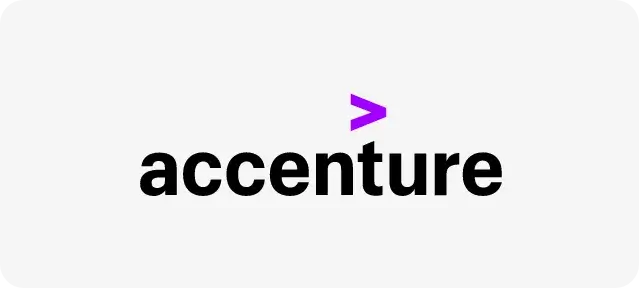
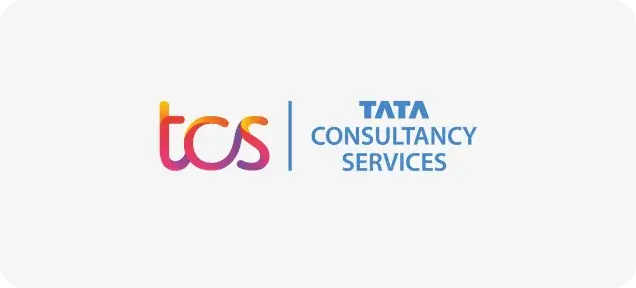

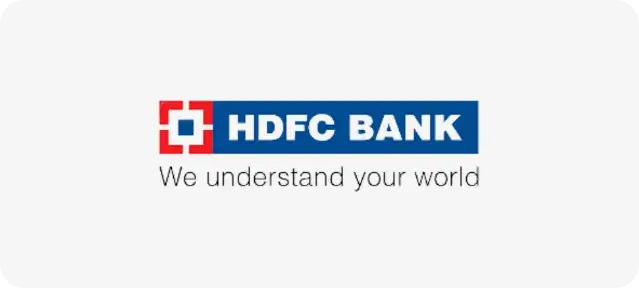

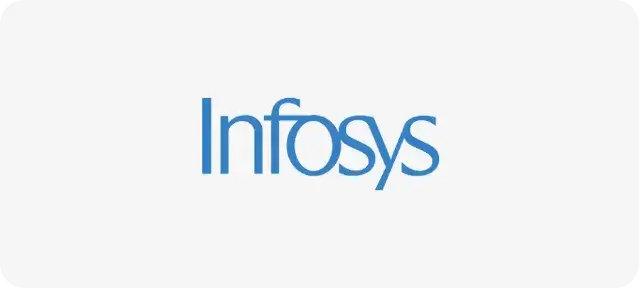

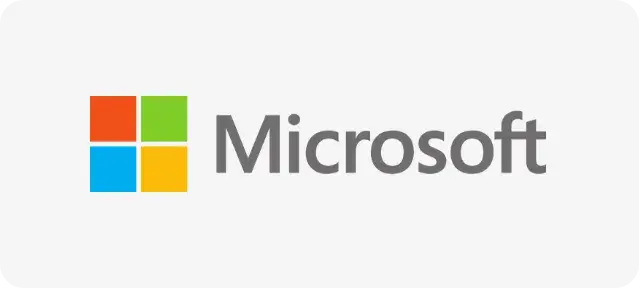
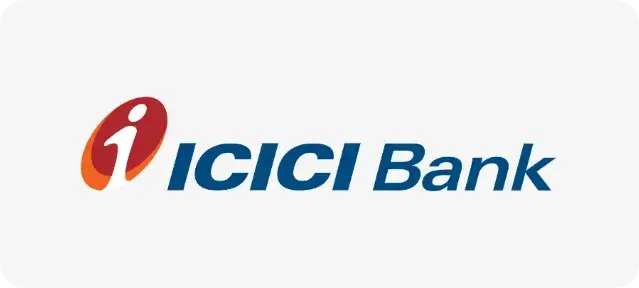
Frequently Asked Questions
You are eligible for Placement assistance only if you enroll for Placement Linked Courses on the website and if you purchase the Dedicated Placement Manager services.
There are prerequisites defined in the "Eligibility criteria" section in every course. Our Courses are open to Learners of all backgrounds who are 18 years of age and older. Activities are a critical component of each of our Courses; therefore, we suggest that the Learners have a conversational knowledge of English when pursuing a Certificate of Completion.
For any Course, you enroll at EduBridge, you need to have a proper Internet connection and a Mobile, PC or a Laptop. Do read Course specific requirements while you enroll and also our Policies and Terms & Conditions.
We are working hard to provide you this, but currently this facility is unavailable. We will keep you updated on the same.
When you complete a paid Learn by Yourself course, for most of them, you will receive a certificate of participation, which you can share on LinkedIn/other social media. Certificates will help demonstrate your accomplishments.
Once you have enrolled, we do not have the option to undo your enrollment. We follow a No Refund - No Transfer Policy - No Exchange Policy.
Once you have selected the Date and Time on the website for the enrolled Course, you are required to be available accordingly.
Please follow the following steps. - In the Browser, click on Settings - Click on “Clear Browsing Data” - Click on “Clear Data”.
There is no limitation to enroll for any EON Courses. The only requirement is to plan your time and decide on any number of Courses you want to continue.
Assessments are visible to you in the 'My Courses' section. Your Trainer will activate this post completion of the sessions. Once the Assessments are activated, you will get a notification on your 'My Calendar' option about the same.
Click on to My Jobs Section on the Learner Portal and go to My Applications. Upon getting selected in an interview, you will see the option to "Upload your Offer Letter". You can upload our Offer Letter or any other document related to your job here.
Once you register and complete your Profile, you will be prompted with the Courses that suit your interest. Visit the Course catalog to Browse our offerings. In addition to searching by Course duration and availability, you can also search by subject to ensure you find a Course that reflects your interests.
If you have any doubts or difficulties in learning, you can directly reach out to our live support, WeCare, available during daytime hours. You can also post your questions on ‘Webex Space,’ where our experts will promptly address them. Additionally, doubt-clearing sessions will be conducted on weekends (Saturdays) by Subject Matter Experts (SMEs). For immediate assistance, you can also reach out to trainers during the live sessions.
Visit our www.edubridgeindia.com → Go to Refer-n-Earn page → Click on “Start Referring Now”, fill up the form to share details of the people whom you want to refer.
• Visit our website - www.edubridgeindia.com → Go to Refer & Earn page → Click on the link and refer your friends to EduBridge by filling up the form. • Ask your friends to visit and enroll for the course of their choice at www.edubridgeindia.com (ensure that he/she is aware about the eligibility of the Course). • While enrolling, on Checkout Page, your friend must enter your 10 digit registered Mobile Number as a Referral Code. Please note, the mobile number is very important to track your referrals and for the calculation of the reward money. If they don’t use your referral code, you will not get any benefits. • Once your referred Learner is enrolled, you can claim your referral amount as per the eligibility criteria. • If you are eligible for the reward, the reward money will be deposited in your bank account within 15 working days.
As per EduBridge’s policy, only one attempt will be given to Learners.
The online live classes are of 3 hours. However, there are no mandatory daily timelines for the learn-by-yourself modules. You can dedicate as many hours as possible to those sections.
Once you complete the enrollment process, you will receive the batch schedule and link to join our live classes. This will also be available in the My Calendar section.
This could be due to several reasons. Try the below options: - Clear the Browser (Chrome/Firefox/Edge/Internet Explorer) Cookies and Cache memory. - Restart the Browser and try logging in once again.
Please inform your Trainer immediately and get the issue resolved. Else, please feel free to raise a ticket using the Help Desk.
Please inform your Trainer immediately and get the issue resolved. Else, please feel free to raise a Ticket using the Help Desk.
If you can't Login to your EduBridge Account: - Double-check your email address/ registered Mobile Number for any misspellings or incorrect characters. It must match exactly what you typed in when you created your Account. - If that doesn't work, try resetting your password.
If you cannot view a Course you’ve enrolled in, try clearing your browser’s Cache and Cookies. If you’re still not able to view the Course, go to the Help Section and raise a ticket. Our support team will resolve the issue for you.
There is a lot of demand for individuals with this skill set in the job market. Instead of hiring separate Front-end and Back-end Developers, companies are finding it easier and economical to hire Full Stack Developers. Google, Facebook, IBM, HP, Oracle, and Accenture are the top companies that require Java Full Stack Developers.
You get 90 days to complete any self-learning Course.
Please inform your trainer and send an email to wecare@edubridgeindia.com. Once you have enrolled, we do not have the option to undo your enrollment. We follow a No Refund - No Transfer Policy - No Exchange Policy.
We constantly aim for the prosperity of each and every learner. This especially differentiates us from the rest of our competitors. We don’t believe in just making money through learning, rather we love to share it and create a better life chance for our learners. We go to great steps to ensure the completeness of your learning resources. For example, investment banking training includes case studies and projects that would be real and relevant.
Participants may have access to online materials, industry experts, and a support system to help them navigate the coursework and projects.













